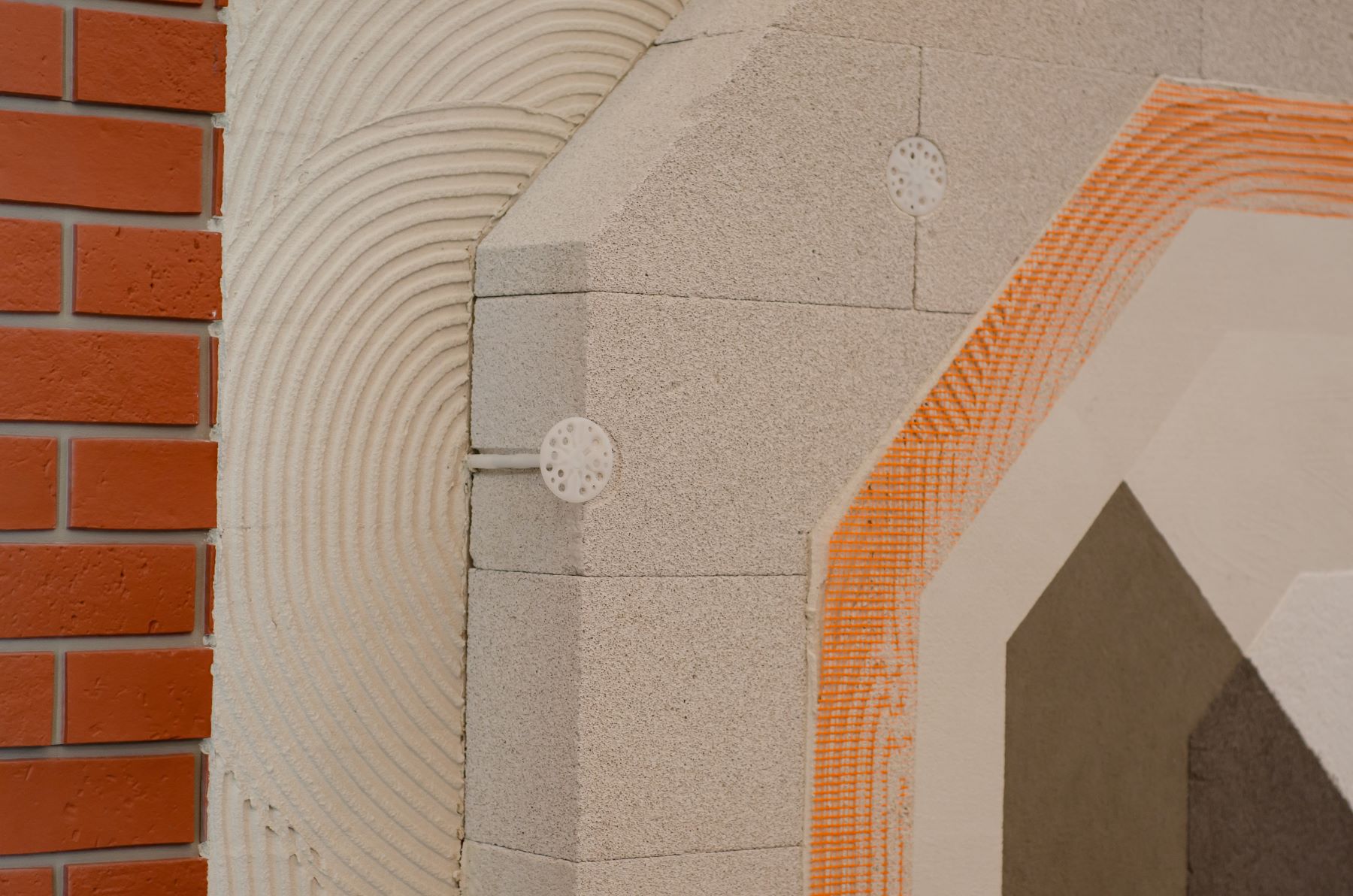Installing an external wall insulation system on your home is a choice that could save you up to 50% on your annual heating bills, as well as reducing noise levels and condensation.
Choosing the right type of external wall insulation is a little trickier, however, as there are a few different materials to choose from, for both the system itself and the render, which gives the property its aesthetic. Here is a rundown of the best external wall insulation materials available.
External wall insulation systems
Expanded polystyrene insulation
Expanded polystyrene insulation, also known as EPS, is one of the most commonly used materials for external wall insulation and it is also the most cost-effective option. EPS is manufactured from foam beads which expand and fuse together when exposed to heat, creating a closed-cell structure.
This structure means that heat can’t flow through due to the trapped air bubbles between the foam beads, making EPS a great insulator. EPS also has high compressive strength despite its light structure that doesn’t add any additional load to the building.
Mineral wool
You may have come across mineral wool before as it is the same type of material that is used in loft insulation, as well as in cavity walls. Mineral wool is made from raw molten materials such as stone or silica which are spun into a fibrous, flexible material that can be used for insulating purposes.
In EWI systems, mineral wool is compressed into a more rigid state than is used in loft insulations. Mineral wool is durable, versatile and breathable due to its fibrous nature.
Wood fibre
Wood fibre insulation is a relatively new material which provides an extremely eco-friendly option for external wall insulation. Wood fibre insulation boards can be created using a ‘wet’ or ‘dry’ process but both use the same source material – waste shavings from timber production.
These shavings are either ground down and mixed with water to form a wood fibre pulp which is then heated, dried and cut into boards, or the shavings are sprayed with paraffin and polyurethane resin which is then dried and cut into boards. Wood fibre insulation is renewable, robust, and flexible, as well as being breathable and improving the indoor air quality of the property.
Materials for render
Silicone
Silicone render is a flexible finish for external wall insulation systems that is very easy to install. The flexibility of silicone means that it is less likely to crack, and it is also a very breathable material. The trade-off for these advantages is that silicone render is one of the more expensive finishes, but that cost is worth it in the long run.
Mineral
Mineral render is a popular choice for external wall insulation as it is very durable, affordable and can be applied all year round, even in cold temperatures. Mineral render is cement-based, using material such as marble aggregate, and can be finished in different textures for the desired aesthetic. Colour cannot be mixed into a mineral render, but it can be painted after installation.
Acrylic
Acrylic render is plastic-based and the cheapest option for an external wall insulation finish. Acrylic is good at holding colour, so is a good choice if you want a bright, vibrant finish, but it is not as flexible as the other renders and may crack, especially on old buildings that move around.
There are a number of factors that will determine which external wall insulation material is the best fit for your property, including your budget, the age of the building and the desired aesthetic. Whichever material you decide to use, you will be able to enjoy the many benefits that external wall insulation brings.

